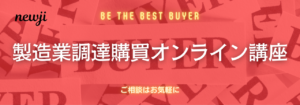- お役立ち記事
- Fundamentals of paper conveyance mechanism and countermeasures for conveyance troubles

Fundamentals of paper conveyance mechanism and countermeasures for conveyance troubles

目次
What is a Paper Conveyance Mechanism?
A paper conveyance mechanism is an essential component in various office equipment and industrial machines, such as printers, photocopiers, and even large-scale printing presses.
This mechanism is responsible for the movement of paper through these machines seamlessly, allowing for efficient printing or copying processes.
It consists of several parts, including rollers, gears, belts, and other moving parts that work in harmony to ensure paper is accurately and efficiently transferred from one part of the machine to another.
Understanding the fundamental operation of a paper conveyance mechanism can be crucial for troubleshooting and maintenance tasks.
How Does the Paper Conveyance Mechanism Work?
To appreciate how a paper conveyance mechanism functions, it is important to understand its nuanced process.
The mechanism begins with paper being fed into the machine, often from a tray or hopper.
Initially, pick-up rollers grab the sheets of paper on command, usually initiated by a print or copy command from the user.
These rollers pull the paper into the machine and set it on the designated conveyance path.
The paper then proceeds along this path, guided by a network of belts and gears that ensure it follows a precise trajectory.
The aligner rollers take over to align the sheets properly to avoid any misalignment that may cause print defects or paper jams.
Once the paper is correctly positioned, it moves on towards the printing or imaging section, where ink or toner is applied.
After the content is printed or copied, the sheet progresses toward exit rollers that move it out of the machine and into a catch tray.
Common Troubles in Paper Conveyance Mechanisms
Despite the precision involved in these machines, paper conveyance mechanisms are not immune to issues. Here are some common troubles that can occur:
1. Paper Jams
Paper jams are perhaps the most familiar issue users encounter. They occur when paper gets stuck somewhere along the conveyance path.
This can happen due to misalignment, worn-out rollers, debris, or issues in the paper quality itself, like torn or crumpled edges.
2. Skewing
Skewing happens when the paper is pulled unevenly, causing a slanted or crooked exit.
This often occurs when rollers have uneven wear or when the paper is not loaded properly in the tray.
3. Multi-Feeding
Multi-feeding issues arise when more than one sheet of paper enters the mechanism simultaneously.
This is usually caused by improper separation settings or a malfunctioning pick-up roller.
Multi-feeding can lead to jams or incomplete printing.
4. Missing or Blurred Print
If the paper isn’t conveyed correctly, it can lead to incomplete or blurred prints.
This could be due to speed issues in the conveyance mechanism or wear and tear in the imaging components.
Countermeasures for Addressing Conveyance Troubles
Addressing issues in paper conveyance involves a strategic approach, paying attention to hardware conditions and operational procedures.
1. Regular Maintenance
Regular maintenance checks are crucial.
Cleaning rollers, replacing worn components, and ensuring there is no debris obstructing the path can prevent a significant portion of conveyance troubles.
Ensuring the correct tension in belts and the proper engagement of gears can also minimize frequent jams or skews.
2. Use Quality Paper
Employing good quality paper that suits the machine’s specifications can prevent issues like multi-feeding and jams.
Paper should be properly stored to avoid moisture that might cause sticking or curling.
3. Check Roller Alignment
Checking and adjusting roller alignment is essential for preventing skewing issues.
Rollers need to be in perfect alignment to ensure paper is pulled through uniformly.
Roller condition should be assessed periodically, and replacements should be made when wear becomes evident.
4. Machine Calibration
Regular calibration of the entire machine helps prevent conveyance issues.
Calibration can ensure that all parts of the conveyance process are synchronized, from pick-up to the final discharge.
It is also recommended to keep driver software and firmware of the machines updated.
Conclusion
Understanding and maintaining the paper conveyance mechanism is critical for anyone who regularly works with equipment that relies on this process.
By being aware of common issues and implementing consistent preventive measures, users can maximize the efficiency and lifespan of their machines.
Conveyance mechanisms, while often unseen, play an enormous role in ensuring that day-to-day print and copy tasks are completed smoothly and without costly interruptions.
With attention to proper maintenance and operational practices, businesses and individuals can enjoy seamless paper handling and high-quality output consistently.
 資料ダウンロード
資料ダウンロード
QCD管理受発注クラウド「newji」は、受発注部門で必要なQCD管理全てを備えた、現場特化型兼クラウド型の今世紀最高の受発注管理システムとなります。
 NEWJI DX
NEWJI DX
製造業に特化したデジタルトランスフォーメーション(DX)の実現を目指す請負開発型のコンサルティングサービスです。AI、iPaaS、および先端の技術を駆使して、製造プロセスの効率化、業務効率化、チームワーク強化、コスト削減、品質向上を実現します。このサービスは、製造業の課題を深く理解し、それに対する最適なデジタルソリューションを提供することで、企業が持続的な成長とイノベーションを達成できるようサポートします。
 製造業ニュース解説
製造業ニュース解説
製造業、主に購買・調達部門にお勤めの方々に向けた情報を配信しております。
新任の方やベテランの方、管理職を対象とした幅広いコンテンツをご用意しております。
 お問い合わせ
お問い合わせ
コストダウンが利益に直結する術だと理解していても、なかなか前に進めることができない状況。そんな時は、newjiのコストダウン自動化機能で大きく利益貢献しよう!
(β版非公開)






